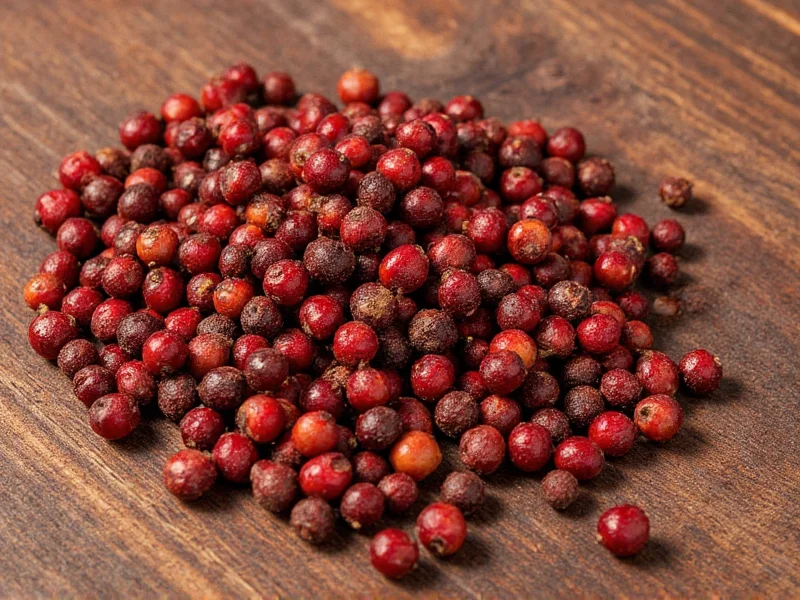Allspice, despite its name suggesting a blend, is actually a single spice made from the dried berries of the Pimenta dioica plant native to the Caribbean and Central America. When recipes call for allspice berries, they typically mean the whole berries that are later ground. Understanding proper substitutions becomes essential when this specific spice isn't available in your pantry.
Understanding Allspice and Why Substitutions Matter
Allspice earned its name because its flavor profile resembles a combination of cinnamon, nutmeg, and cloves. This unique characteristic makes it irreplaceable in certain traditional recipes like Jamaican jerk seasoning, pickling blends, and classic pumpkin pie. When you need an allspice berries substitute, you're essentially trying to recreate this distinctive flavor profile using more commonly available spices.
Home cooks frequently search for allspice substitute for baking or allspice replacement in savory dishes when they discover they're missing this specialty spice. The right substitution depends on whether you're working on sweet or savory applications, as the flavor balance requirements differ significantly between these contexts.
Most Effective Allspice Berry Substitutes
Creating an accurate homemade allspice substitute requires understanding the precise flavor balance. The following table shows the optimal ratios for different substitution scenarios:
| Substitute Blend | Ratio for 1 tsp Allspice | Best For | Limitations |
|---|---|---|---|
| Cinnamon-Nutmeg-Cloves Blend | ½ tsp cinnamon + ¼ tsp nutmeg + ¼ tsp cloves | Most baking and savory dishes | Slightly sweeter than true allspice |
| Pumpkin Pie Spice | 1 tsp | Baking, especially fall desserts | Contains ginger which alters flavor profile |
| Cinnamon Only | ¾ tsp | Quick fixes in baking | Lacks complexity and warmth |
| Cloves Only | ⅛ tsp | Ham glazes and hearty stews | Overpowering if used in excess |
When to Use Specific Substitutions
The ideal allspice replacement for meat dishes differs from what works best in baked goods. For savory applications like jerk chicken or beef stew, the classic cinnamon-nutmeg-cloves blend provides the necessary depth. In these cases, maintaining the 2:1:1 ratio ensures you capture allspice's warm, peppery notes without overwhelming the dish.
For baking applications, particularly when searching for a pumpkin pie spice substitute for allspice, pre-mixed pumpkin pie spice serves as the most convenient alternative. Most commercial pumpkin pie spice blends contain the essential cinnamon, nutmeg, and cloves, though they typically include additional ginger which slightly alters the flavor profile.
When making your own allspice substitute without cloves, increase the nutmeg slightly to ¼ teaspoon and add a pinch of black pepper to approximate allspice's distinctive warmth. This variation works particularly well in apple pies and other fruit-based desserts where cloves might overpower delicate flavors.
Creating Your Own Allspice Substitute Blend
For those who frequently need an allspice berries alternative, creating a small batch of homemade substitute ensures you're never without this essential flavor. Here's a simple method:
- Measure ½ teaspoon ground cinnamon
- Add ¼ teaspoon ground nutmeg
- Mix in ¼ teaspoon ground cloves
- Stir thoroughly to ensure even distribution
- Store in an airtight container for up to 3 months
This blend works as a perfect 1:1 replacement for ground allspice in virtually any recipe. For larger batches, multiply these measurements proportionally. Keep your homemade substitute in a cool, dark place to preserve flavor potency. Many professional chefs maintain a small container of this blend specifically for those times when allspice isn't available.
Common Substitution Mistakes to Avoid
Even experienced cooks make errors when seeking an allspice replacement in recipes. The most frequent mistake is using equal parts of each spice (1/3 cinnamon, 1/3 nutmeg, 1/3 cloves), which creates a blend too heavy on nutmeg and cloves. Remember that cinnamon should always dominate the mixture.
Another common error involves substituting whole spices instead of ground. If using whole spices to create your substitute, grind them together in a spice grinder first—never add whole spices directly to recipes calling for ground allspice. The texture difference would significantly impact your dish.
When working with delicate recipes like custards or light cakes, many cooks overlook the importance of sifting the substitute blend. Properly sifted spices ensure even distribution and prevent bitter pockets of concentrated flavor—a crucial consideration for the perfect allspice substitute for baking.
Special Considerations for Specific Recipes
Certain traditional dishes require more nuanced substitutions. In Jamaican cuisine, where allspice is fundamental to jerk seasoning, consider adding a pinch of black pepper to your substitute blend to better approximate the berry's natural heat. For Middle Eastern dishes featuring allspice, like certain rice pilafs, a touch of cardamom (1/8 teaspoon) in your substitute enhances authenticity.
When substituting in pickling recipes—which often call for whole allspice berries—use the same spice ratio but increase the quantity by 25%. The larger surface area of whole berries releases flavor more slowly than ground spices, requiring this adjustment for equivalent flavor impact.











 浙公网安备
33010002000092号
浙公网安备
33010002000092号 浙B2-20120091-4
浙B2-20120091-4